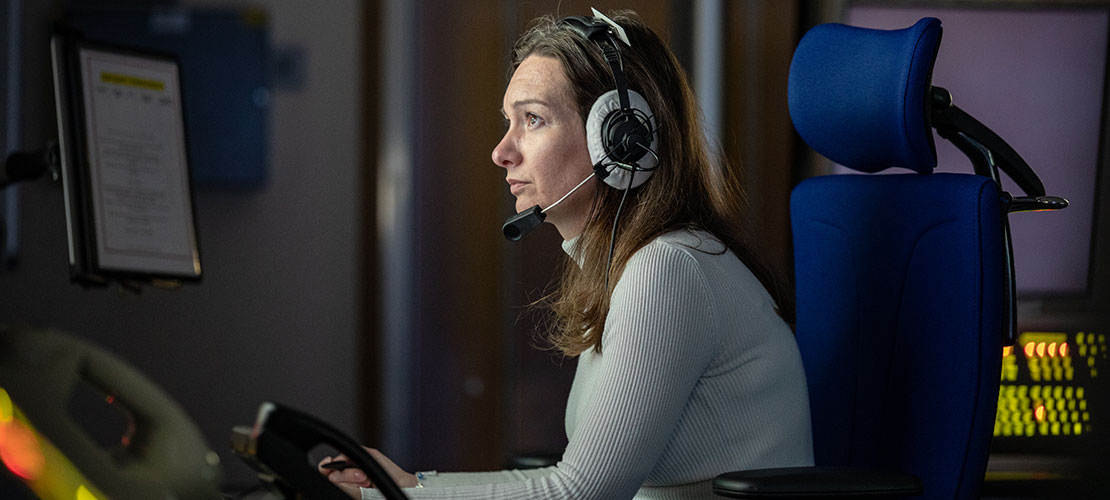
We have a dedicated Air Traffic Management (ATM) team which provides independent advice on regulatory, technical and safety matters to support operational concepts and aviation technology systems including Traffic Alert and Collision Avoidance Systems (TCAS) and Air Traffic Control Systems (ATC) (both existing and proposed).
Our customers include Air Navigation Service Providers (ANSPs), civil aviation regulators, military air traffic control authorities, equipment Delivery Teams and agencies and EUROCONTROL.
Strategy and Procurement Support
Our Air Traffic Management (ATM) team works closely with Air Navigation Service Providers (ANSPs) to formulate their future aviation strategies and support the full Air Traffic Control (ATC) system procurement lifecycle.
This has notably been demonstrated through work with the Norwegian ANSP, Avinor, helping them determine their future strategy for providing cost-effective air surveillance services in challenging environments; and through work with the MOD for modernising the provision of its terminal air traffic control system services.
Our Air Traffic Management team can offer:
- Independent advice covering Air Traffic Management technology, standards and regulation, operations, safety and economic factors;
- General programme support to ensure that ATC systems procurement programmes address operational and regulatory requirements, and are compatible with the emerging SESAR environment;
- Advice on civil-military aviation interoperability in the Air Traffic Management domain;
- Enterprise Architecture ATC solutions enabling customers to visualise and optimise strategies for the procurement of future ATC and ATM infrastructure and the development of the accompanying procedures in a cost effective and timely manner.
Safety Advice
We can offer Air Traffic Management safety advice on a broad range of ATM-related areas. For example, for the past 5 years we have provided Customer Friend support to the MOD’s Project MARSHALL*, including development of the Air Safety Management Plan, Part 1 Safety Case Report, Aviation Safety Management System and Safety Standards Register.
We have played an integral role in providing Air Traffic Management safety advice and evaluation of the bidders’ safety submissions during the tender process and following down select.
Key capabilities include the following:
- ATM Safety advice: for example, tailoring the response to regulatory and standards’ requirements appropriate to the specific project context and scope;
- Preliminary Hazard Identification and Assessment (PHI&A);
- Production of Part 1 and Part 4 Safety Case reports;
- Development of Aviation Safety Management Systems;
- Writing Safety Management Plans;
- Development of Safety Standards Registers.
Airspace Management and Change
With increasing numbers of airspace users, the optimised structuring and use of airspace is essential for ensuring efficient and safe operations.
Our Air Traffic Management team has a keen appreciation of the interests and concerns of the disparate stakeholder groups, such as commercial aviation operators, General Aviation, military, and operators of Remotely Piloted Aircraft Systems (RPAS) / Unmanned Aerial Vehicles (UAVs).
For example, we worked closely with NATS (the UK's main Air Navigation Service Provider ANSP) in the development of the Hebrides Airspace change to ensure minimal disruption to civil transatlantic flights. The design (shape) aligns to civil air routes and accommodates route free airspace as well as satisfying the maritime requirements. The design of the airspace, associated letters of agreement and airspace protocols were approved by the national airspace regulator (CAA) and successfully implemented in February 2015. Our experts also developed the Airspace Change Proposals that led to the establishment of specialist segregated airspace for Remotely Piloted Aircraft Systems (RPAS) and Unmanned Aerial Vehicles (UAVs) for the Wales UAS Environment at Aberporth and in the vicinity of the MOD’s exercise area on Salisbury Plain.
We can offer:
- Airspace Change Proposals (including running of the public consultation process);
- Modelling of Airspace Utilisation (e.g. levels of General Aviation usage in Class G airspace);
- Advice on the technical, operational and regulatory aviation issues related to RPAS;
- Assessments of the operational impact of wind turbines.
Air Surveillance Performance
We have been closely involved in many of the major developments in ATM air surveillance technology from the earliest developments of surveillance radar through secondary surveillance radar to the latest multilateration and ADS-B techniques.
We are proactive in developing surveillance technologies and their international standards through the International Civil Aviation Organization (ICAO), RTCA and EUROCAE groups. We have world-renowned experts in the field of aircraft surveillance technology who are able to offer our customers the best independent advice.
Our team can offer:
- Advice on air surveillance system deployment, particularly the new technologies of ADS-B and multilateration;
- Impartial support in procurement, integration and validation of new aircraft surveillance systems;
- Performance analysis of new or existing surveillance systems, ensuring systems are fit for purpose and operating to their full potential;
- Radio frequency spectrum modelling for the secondary surveillance environment;
- Development of safety cases;
- Air surveillance training in all aspects of surveillance technology (Mode S, ADS-B, multilateration, TCAS), and also in surveillance data distribution and processing;
- Integration and licensing support for Identification Friend and Foe systems in the civil aviation domain.
Airborne and Ground-Based Safety Nets
Aviation safety nets enhance overall aircraft safety by providing warnings to the pilot/controller of potentially hazardous mid-air situations.
We have over 20 years’ experience in the ground based and airborne safety nets domains; having world-class expertise in both airborne safety nets, namely: Airborne Collision Avoidance System (ACAS) and Traffic Alert and Collision Avoidance System (TCAS); and ground-based safety nets, namely: Short Term Conflict Alert (STCA), Minimum Safe Altitude Warning (MSAW), Approach Path Monitoring (APM) and Area Proximity Warning (APW).
We can offer:
- Support during all phases of the ground-based safety net lifecycle, including system procurement, system design, verification and validation. We also provide support for optimisation of the ground-based safety net system both before and during operational service.
- Development of safety net analysis tools, including fast-time safety net modelling for parameter optimisation and system validation.